Posted: 27 Jan 2012 07:09 PM PST  Time to gird your loins, ladies. The Leftover expansion for Shadowgun is now finally available for your Android device. The expansions is a thank you gift from Madfinger Games featuring giving players the chance to battle it out in 4 all new levels while expanding upon the original story. Best of all — it’s all free. All you have to do is jump into your Android Market and update the app. If you’re looking for the Tegra 3 optimized version for your Transformer Prime, you’re going to have to sit the bench. That version will be coming sometime in the near future. [Market Link] | |||||||||||||||||||||||||||||||||||||||||||||||||||||||||||||||||||||||||||||||||||||||||||||||||||||||||||||||||||||||||||||||||||||||
Posted: 27 Jan 2012 06:05 PM PST 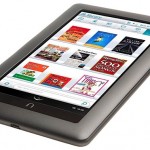 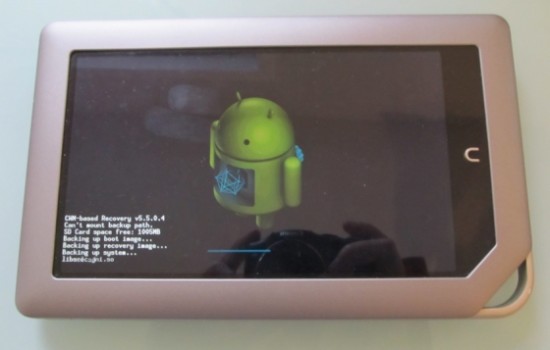 When it comes to hacking and modding a device’s software, it’s always played out like an episode of Tom & Jerry. A developer will take advantage of an exploit in the software that allows them to root the device, followed by the hardware OEM who will release an update to patch up the software, and things start all over again. Such is the case with the Barnes & Noble Nook Tablet, after B&N’s latest update, shall we say, complicated things a bit. But now, as to be expected, a new root method has found its way to the N-Tab, making it possible once again to not only root the device, but get that precious Android Market up and running on the ‘old e-reader. It’s a little tricky in that you will have to use an SD card to get the Google apps on the device but if you’re at all familiar with partitioning SD cards (like the oldschool G1 days) using ADB, Linux and ClockworkMod, you’ll feel right at home. The boys on on XDA put together a nice, quick tutorial further explaining the whole process, complete with download links to get everything working properly. Good luck and godspeed, folks. XDA | Via Liliputing | |||||||||||||||||||||||||||||||||||||||||||||||||||||||||||||||||||||||||||||||||||||||||||||||||||||||||||||||||||||||||||||||||||||||
Posted: 27 Jan 2012 03:08 PM PST 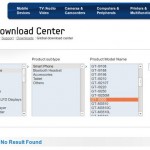 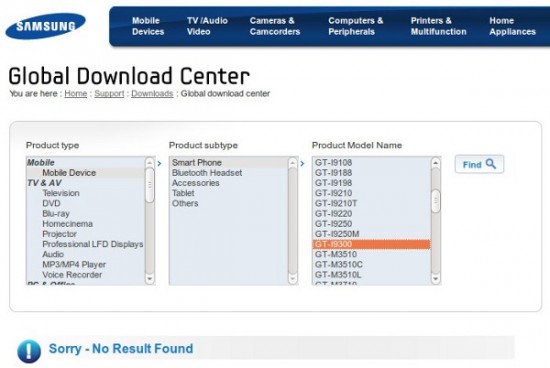 If Samsung doesn’t make any drastic changes to their model numbering conventions, the Samsung Galaxy S III may very well have just appeared on the company’s official support site. Listed among Samsung’s various smartphones is the GT-i9300, a model number that sequentially follows the GT-i9xx series (Galaxy S), GT-i91xx (Galaxy S II), and GT-i92xx ( Galaxy Nexus and Note). There is always the possibility that this turns out to be some other upcoming handset or a variation on a current design, as clicking on the device model doesn’t reveal any further information. We may not have an answer as soon as we’d like, as Samsung is rumored to be shelving the announcement of the GS3 until sometime after Mobile World Congress. The annual trade show for the mobile industry was expected to serve as a coming out party for the new flagship handset. [via Engadget] | |||||||||||||||||||||||||||||||||||||||||||||||||||||||||||||||||||||||||||||||||||||||||||||||||||||||||||||||||||||||||||||||||||||||
Posted: 27 Jan 2012 02:02 PM PST 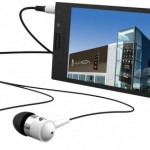 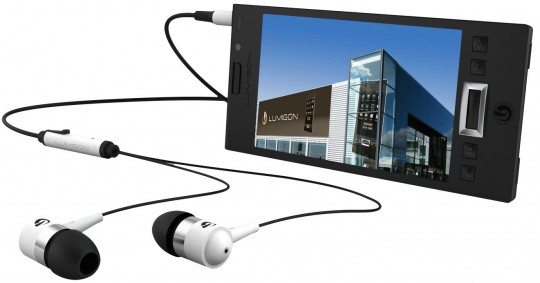 Lumigon first announced their Lumigon T1 smartphone at Mobile World Congress way back in February of 2010. The company will be back at MWC this year, this time showing off…the Lumigon T1. If you aren’t familiar with the device, it was one of a set of handsets initially unveiled by the mobile hardware startup. Plans for S1 and E1 designs were abandoned as Lumigon focused its efforts on their flagship device, which was promised to launch by the end of 2010. After throwing an unveiling party for the T1 the handset never managed to surface. Two years later Lumigon is at it again and looks to be unveiling a redesigned T1 at this year’s MWC. When originally announced the T1 was specced with a 3.5-inch display, HDMI output, 5MP camera, and a 1GHz CPU. Later a partnership with Bang and Olufsen promised to bring premium audio to the handset. The phone was positioned as an industry leader in terms of hardware, so the assumption is Lumigon will have an updated device to show off at this year’s event (if they plan to stay at the head of the premium market). We’ve been tracking the smartphone equivalent of Bigfoot since its first announcement. Perhaps this year we can bring you a hands-on overview. [via AndroidCommunity] | |||||||||||||||||||||||||||||||||||||||||||||||||||||||||||||||||||||||||||||||||||||||||||||||||||||||||||||||||||||||||||||||||||||||
Posted: 27 Jan 2012 01:19 PM PST   Inching one step closer to completely eradicating the Ericsson name from all future Xperia handsets, the European Commission has approved Sony’s takeover of Sony Ericsson. The deal comes as Sony looks to integrate its line of Android smartphones more deeply into its product lineup, allowing for greater interoperability between Xperia handsets and internet-connected televisions, tablets, and media devices. Complete ownership for Sony comes at a price of €1.05 billion and includes the acquisition of a selection of patents and cross-licensing with other Ericsson intellectual property. [Reuters via AndroidCentral] | |||||||||||||||||||||||||||||||||||||||||||||||||||||||||||||||||||||||||||||||||||||||||||||||||||||||||||||||||||||||||||||||||||||||
Posted: 27 Jan 2012 01:05 PM PST 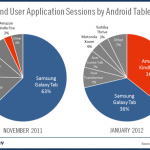  There’s a new sheriff in town according to Flurry, an analytics company tracking tens of thousands of Android applications. After crunching the numbers on Android tablet usage the firm found that the Amazon Kindle Fire has quickly closed the gap with the Samsung Galaxy Tab. In November, the Galaxy Tab (no specific model is named) accounted for 63 percent of the Android tablet market in terms of application sessions tracked by Flurry. The fledgling Kindle Fire only accounted for 3 percent during its first month on the market. Fast forward to the new year and the Kindle Fire has exploded in popularity, joining the Galaxy Tab at the top of the heap with both devices holding a 36 percent share.  Given Flurry’s method of collecting data, the percentages presented do not necessarily represent a true picture of actual market share. In this case, the Kindle Fire’s close ties to Amazon’s online content have led to a greater ratio of paid downloads and perhaps greater engagement with the Android-based tablet. There is also the possibility that Flurry’s tracking software appears in a higher proportion of apps in Amazon’s applications store as compared to the Android Market. Still, the numbers offer a generalized view of the current tablet landscape and the results are clear: the Kindle Fire has been a wild success. Flurry attributes the Kindle Fire’s success to its low retail price, with Amazon expecting to reap most of their profits from the sale of digital goods via their online storefront. So far the model appears to be working, but devices like the Galaxy Tab still hold an important place in the tablet world for those looking for a powerful device with greater functionality [via Flurry] | |||||||||||||||||||||||||||||||||||||||||||||||||||||||||||||||||||||||||||||||||||||||||||||||||||||||||||||||||||||||||||||||||||||||
Posted: 27 Jan 2012 12:12 PM PST  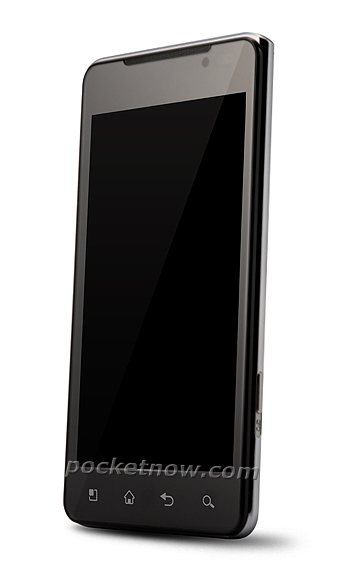 LG’s followup to the Optimus 3D recently surfaced under the LG CX2 name. The new handset, which looks to be unveiled at Mobile World Congress in February, is said to feature a 1.2GHz dual-core CPU from Texas Instruments, a glasses-free 3D NOVA display measuring 4.3-inches, and dual 5MP cameras for capturing 3D content. It’s also expected to launch under a name other than the CX2 (surprise, surprise). The latest rumors suggest the final moniker of the handset will be the LG Optimus 3D Max, a fitting name for a phone that improves on the original Optimus 3D without completely re-inventing the concept. The handset is expected to be available in the spring. [via UnwiredView] | |||||||||||||||||||||||||||||||||||||||||||||||||||||||||||||||||||||||||||||||||||||||||||||||||||||||||||||||||||||||||||||||||||||||
Posted: 27 Jan 2012 10:40 AM PST 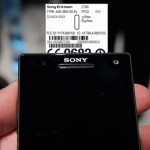 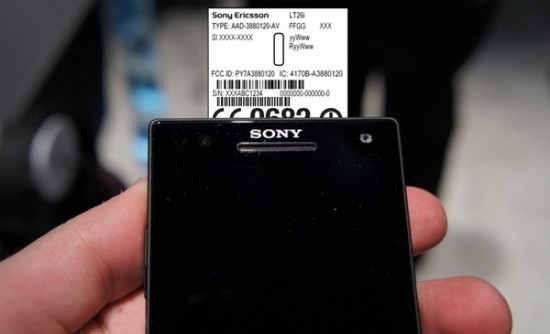 The Sony Xperia S has made the prerequisite visit to the FCC en route to release and had all sorts of connectivity in two. The handset’s quad-band GMS/EDGE radio was put through its paces on the 850/900/1900/2100 UMTS bands along with HSPA, RFID, Bluetooth 2.0 +EDR, 802.11 b/g/n WiFi and GPS. We also can’t forget ANT+ connectivity for fitness tracking devices such as heart rate monitors. You’ll notice the broad swath of radio waves covered includes bands compatible with both AT&T and T-Mobile though there are no plans for an official US release at this time. AT&T will get the very similar Xperia Ion. The government committee’s approval nonetheless is an important step towards the release of handset. [FCC via Engadget] | |||||||||||||||||||||||||||||||||||||||||||||||||||||||||||||||||||||||||||||||||||||||||||||||||||||||||||||||||||||||||||||||||||||||
Posted: 27 Jan 2012 09:54 AM PST 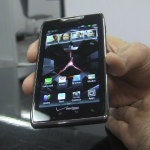 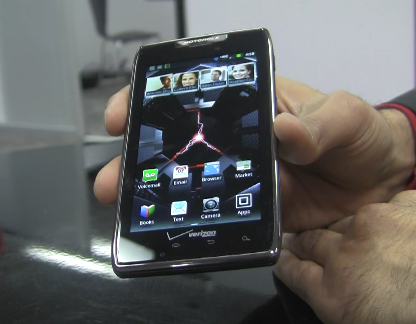 Amazon’s posted another great deal for another great Android phone. The all-day battery having DROID RAZR MAXX is normally $300 in Verizon stores but Verizon’s willing to let it go for just $200 if you’re a new customer signing a new two-year contract. Existing customers will naturally have to pay more, but even your discount is quite desirable compared to the MSRP. You’ll be able to get it for just $230. The device boasts all of the same features from the original – dual-core processor, 4G, 1GB of RAM, 4.3 inch qHD display and more – but has a 3300 mAh battery that Verizon claims will get users 21 hours of talk time. Check it out here if you’re interested. [via AndroidGuys] | |||||||||||||||||||||||||||||||||||||||||||||||||||||||||||||||||||||||||||||||||||||||||||||||||||||||||||||||||||||||||||||||||||||||
Posted: 27 Jan 2012 09:01 AM PST  While some are wondering what’s going on with a quad-core Exynos processor of some sort, most of us know that Samsung still has yet to push the boundaries of dual-core. Their Exynos chipset series is one of the most efficient, fast and capable chipsets around and the Exynos 5250 will take things a step further. It’s an ARM Cortex-A15 chipset that will boast a 2GHz clock speed, all the while sucking even less power than some of their earlier chipsets. The chip has begun sampling, according to Samsung, and will hit mass production sometime in Q2’12.  This gives them a good timeline to put the chip into an early device and showcase it at a recent event. Taylor Wimberly from Android & Me says that recent device could be a new Galaxy Tab and that the show could be Mobile World Congress in a new rumor. The device they’re looking to bring out is reportedly bigger than 10 inches. Yes, I know – it’s hard to imagine anything bigger than 10 inches to be considered wieldy enough for practical use. “Well what if the device is just 10.1 inches,” I asked myself. That’d be plausible if not for the belief that it will come with a WXQGA display (2560×1600), something that the Exynos 5250 will indeed support. Wimberly reportedly saw a prototype device of the same cloth but was unable to take photos of it. We’re not sure if his rumor stems from that device alone but we can’t say excitement will drape all over us if it did. Prototypes and development devices are usually specced well beyond what is usually necessary for consumer use. We do hope to see a device of some sort with the Exynos 5250 at MWC, though. I can confirm that Samsung System LSI was indeed on-hand at CES showing off top secret prototypical Exynos devices, however I was not ultimately granted permission to take a look myself. In my meeting with them they sounded like they had a product ready to show off in the very near future. We’re hoping this rumor holds true and we’ll be at Mobile World Congress to see whatever they’re willing to show. | |||||||||||||||||||||||||||||||||||||||||||||||||||||||||||||||||||||||||||||||||||||||||||||||||||||||||||||||||||||||||||||||||||||||
Posted: 27 Jan 2012 07:24 AM PST  Strategy Analytics took some time to crunch some numbers in the tablet space and came up with very encouraging Q4’11 numbers for Android. First of all, Android tablet shipments tripled from 3.1 million units in Q4’10 to 10.5 million in Q’11. This is, of course, due to many OEMs jumping into the tablet game in 2011 and looking toward Android for their software needs just as most do with phones. The holiday season introduced a great deal of new tablets, including the oft-desired Amazon Kindle Fire.  They also found that Android shipments accounted for 39% of the share in this quarter, up from just over 29% in the same quarter last year. They attribute Android’s growth to cheap, yet highly marketable options such as the Amazon Kindle Fire and the Barnes and Noble Nook Tablet. Apple’s iPad took 57.6% of the share and that was down from 68.2% a year ago. It’ll be interesting to see if Android’s momentum can sustain and seriously attack iOS as it has been able to do in the phone space. Attractive pricing and a good software ecosystem are just two of the many things that need to be maintained in order for Android to have a chance and it would appear that both facets are doing quite alright. It’s worthy to note that when referring to Android tablets, the number of items shipped are just that – shipped to retailers. With the iPad, shipped is considered sold. Find the full press release below.
| |||||||||||||||||||||||||||||||||||||||||||||||||||||||||||||||||||||||||||||||||||||||||||||||||||||||||||||||||||||||||||||||||||||||
Posted: 27 Jan 2012 06:20 AM PST  ASUS remains one of the more vocal OEMs these days as they have identified the widely-reported ASUS Transformer Prime lockup issue that has sprung up after the update to Android 4.0. They hope to have a fix out this February but couldn’t give a more specific window than that.  They also plan to fix some WiFi and Bluetooth dropout issues with a server side fix, something they are also aiming to fix next month. ASUS is currently collecting serial numbers from users through technical marketing manager Gary Keys on XDA. They’ll be trying to mirror your device to see if it’s affected with the problems identified. Are any of you experiencing these things following your Ice Cream Sandwich update? [XDA via The Verge] | |||||||||||||||||||||||||||||||||||||||||||||||||||||||||||||||||||||||||||||||||||||||||||||||||||||||||||||||||||||||||||||||||||||||
Posted: 27 Jan 2012 05:58 AM PST 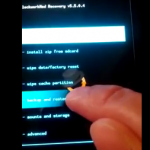 Our friend Koushik Dutta has posted a new teaser video to his Google+ page showing a touch-based recovery that he’s been working on. This isn’t quite like the touch-based recovery we saw before that simply had on-screen buttons for navigating. Koush is going all out with the project, implementing the ability to scroll and select list items, all via touch and without the use of buttons, virtual or otherwise. While we’re not sure how far off we are from seeing a stable release and while we don’t know how many devices this will be intended for we’re glad to see that progress is looking good. Check it out in the video above. [Thanks Micah!] | |||||||||||||||||||||||||||||||||||||||||||||||||||||||||||||||||||||||||||||||||||||||||||||||||||||||||||||||||||||||||||||||||||||||
Posted: 27 Jan 2012 05:47 AM PST  Vlingo has taken a verbal and public beating, lately, for findings that suggested their application was doing more than it was supposed to. Users found that their application would send more data than it really needed to and had folks wondering which data was being sent, for what reason and where. Asked to comment on the findings, Vlingo blessed us with a better explanation than we’d normally expect. Firstly, they said that an issue with the way they present their privacy policy for certain devices was misleading. As you know, Vlingo partners with OEMS, one of the most notable being Samsung, to integrate Vlingo into their software and sometimes the OEMs want additional features. 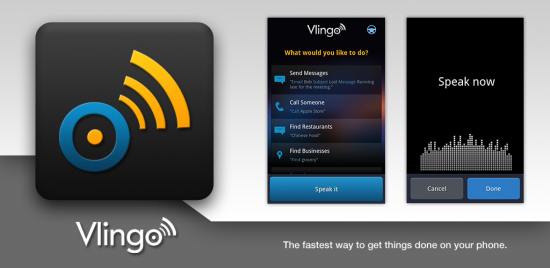 One such feature is controlling the playback of music. In order to control that, Vlingo needs to be able to process the artist and track name and that takes up data, even if it’s a negligible amount. The issue comes where Vlingo doesn’t state this in their privacy policy because the same notice is used for all integrations of Vlingo. This causes an unexplanatory discrepancy in what Vlingo reports and what’s really going on. To combat this, they’ll simply be sure to update their privacy policies for each specific implementation that they developer. Vlingo also says that increased data usage may come from a couple of bugs they’ve found, including one that allowed a service to run after it should have been stopped as well as one that accidentally sent location data. We’re not sure where the app “sends” that data to, but we’re glad that it was acknowledge. Vlingo has provided a full rundown of everything that can be read below, courtesy of Android Central. Be sure to head to Android Pit, the outlet who brought these issues to the forefront, for more information. We take any claims about our customers privacy and security very, very seriously. We certainly appreciate that we have individuals who are passionate enough about Vlingo s products and about their own privacy rights to conduct this sort of in depth investigation. No question it has raised some real issues, and we have already begun to address the bugs internally. | |||||||||||||||||||||||||||||||||||||||||||||||||||||||||||||||||||||||||||||||||||||||||||||||||||||||||||||||||||||||||||||||||||||||
Posted: 27 Jan 2012 05:24 AM PST  It’s no $99 fire sale but daily deals site Woot.com is offering the HP Touchpad at a pretty good price, all things considered. You can get the 9.7 inch 32GB WiFi variant for $220 + shipping. If you have been unable to find this thing this long after the TouchPad fire sale this is a great chance to get one.  It’s also good timing considering recent developments in the community. CyanogenMod 9 is as stable as it’s ever been on the TouchPad, even if it is unofficial right now. Once stable, you’ll have one of the cheapest, yet most capable Android 4.0 tablets around. Take a look at its section on RootzWiki to see what’s available for it so far. Most aren’t even 80% stable yet but still worth checking out. As for those who will opt to stick with WebOS, you’ll be happy to know that HP will soon be open-sourcing the software so that the hard work put in by the Palm team doesn’t go to waste. Exciting times, indeed. Find the 32GB version here. For what it’s worth, sellout.woot also had the 16GB version for $170 but, as you can imagine, it has sold out. [Thanks Razzle!] |
Saturday, January 28, 2012
Subscribe to:
Post Comments (Atom)
No comments:
Post a Comment